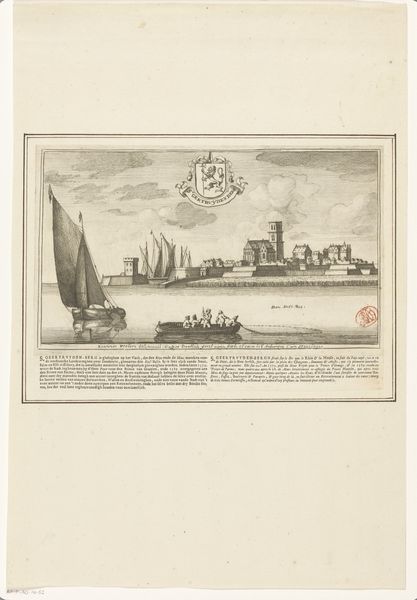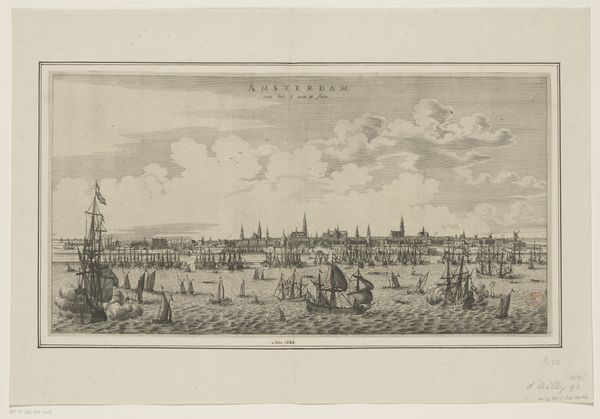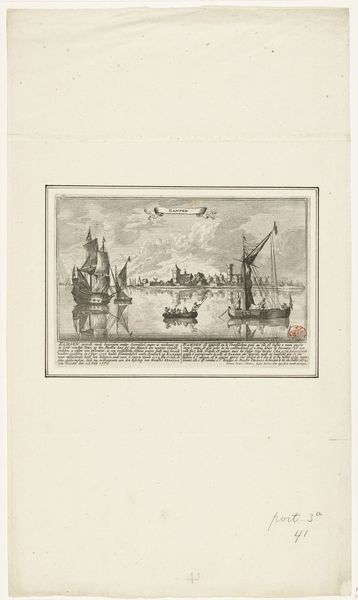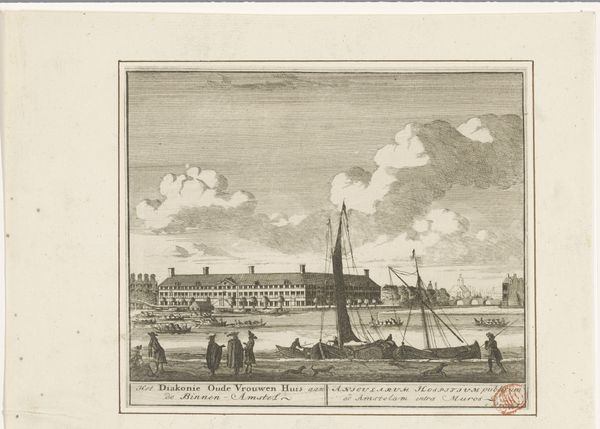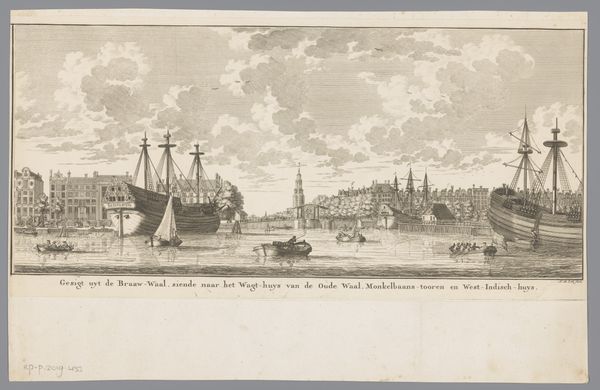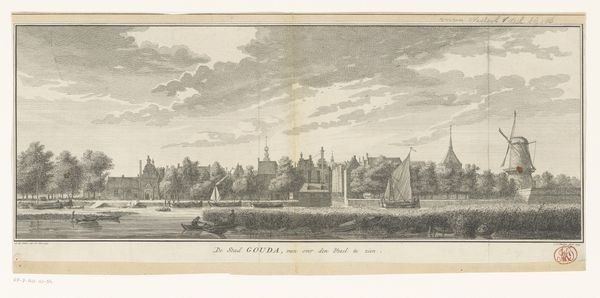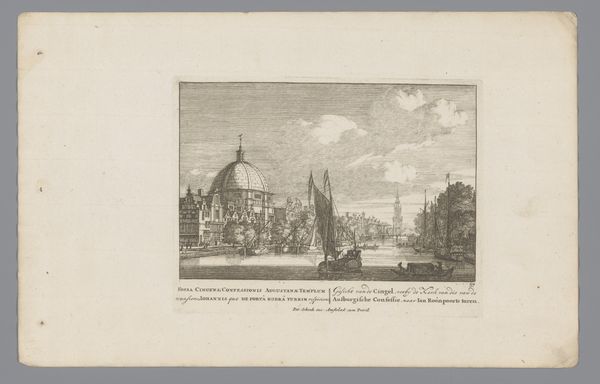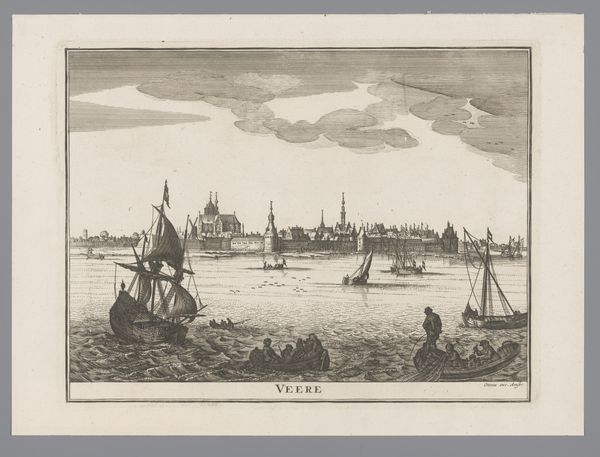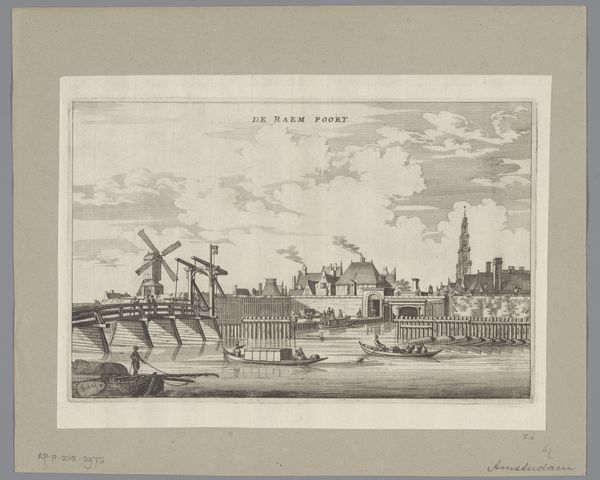
print, paper, engraving
#
baroque
#
dutch-golden-age
# print
#
old engraving style
#
traditional media
#
paper
#
cityscape
#
engraving
Dimensions: height 148 mm, width 249 mm, height 174 mm, width 250 mm
Copyright: Rijks Museum: Open Domain
Gaspar Bouttats made this print of Willemstad in North Brabant using etching, a technique that allowed for detailed line work. Prints like this served a vital public function in the Dutch Republic. They offered citizens a visual representation of their towns and territories, reinforcing a sense of shared identity and civic pride. Willemstad, with its imposing fortifications, symbolized the Republic's strength and independence. The image is replete with visual codes; the windmills evoke the Dutch mastery of water, while the sailing ship represents its maritime power and mercantile ambition. The coat of arms, prominently displayed, asserts the town's authority and status. Created in the late 17th century, this print reflects the cultural values of a society that had recently won independence after a long struggle with Spain. Prints such as this helped to shape public opinion and promote a sense of national unity. Historians turn to sources such as period maps, civic records, and political pamphlets to understand the complex web of meanings embedded in this seemingly simple image of a town.
Comments
No comments
Be the first to comment and join the conversation on the ultimate creative platform.
